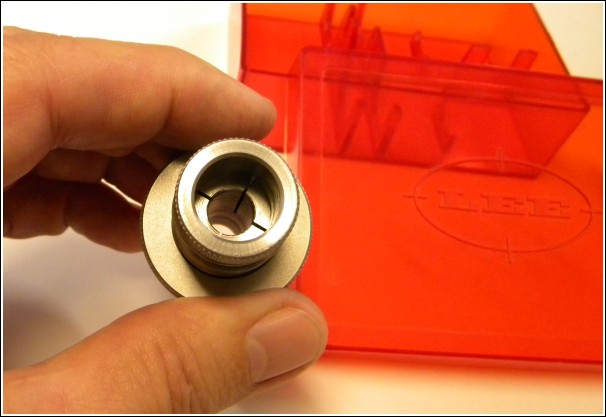
Normally I don't like to crimp rifle cases. If your neck tension is
correct there's rarely a need to crimp rifle calibers. However, there are exceptions to almost everything. Some rifle calibers (like the 30-30 Win.
and the .458 Win. Mag.) have very thin brass, and they usually perform better with a firm crimp. I like to crimp inside (near the front of edge) of the cantilure.
However, you need to be careful when using a heavy roll crimp, because it can easily buckle these cases between the neck and the shoulder. The
thinner brass of the 30-30 also has a bit less bullet tension compared to other calibers - especially after a few firings when the thin case necks become harder.
For pistol cases like the .45 ACP, 9mm or .40 S&W I prefer to use a conventional taper crimp die in a separate operation, after seating the
bullet. Whenever I reload for a revolver I like to use a uniform roll crimp. Just don't over-do it, because some calibers with thin cases (like the .38
Special) will buckle above the web. That's a common cause for handloads to not chamber. This is the perfect application to use a Wilson Case
Gauge, because with pistol calibers - they CAN check case width.
The Lee Collet Crimp Die doesn't put any downward force on the case, and it avoids deforming weak case necks. That's why
I prefer to use this die for crimping. This particular die also provides a very good looking and functional crimp.
